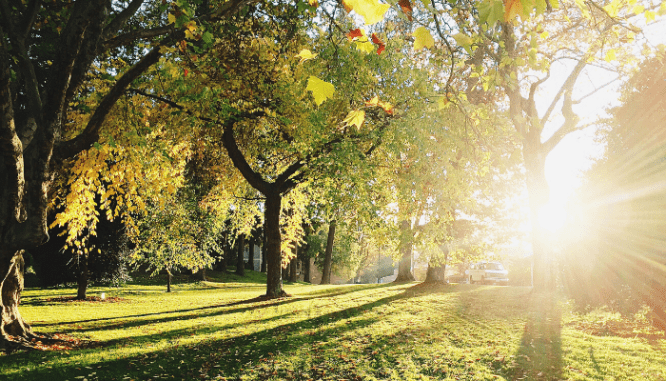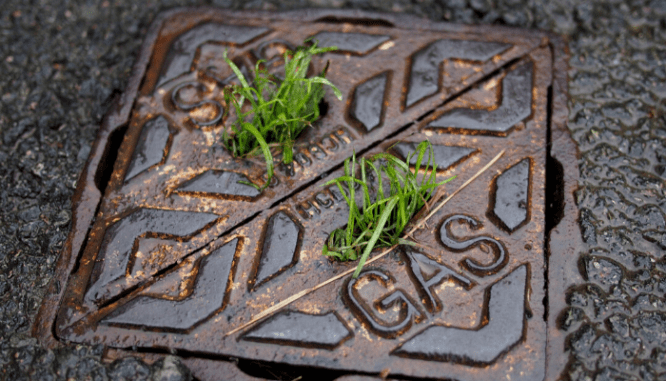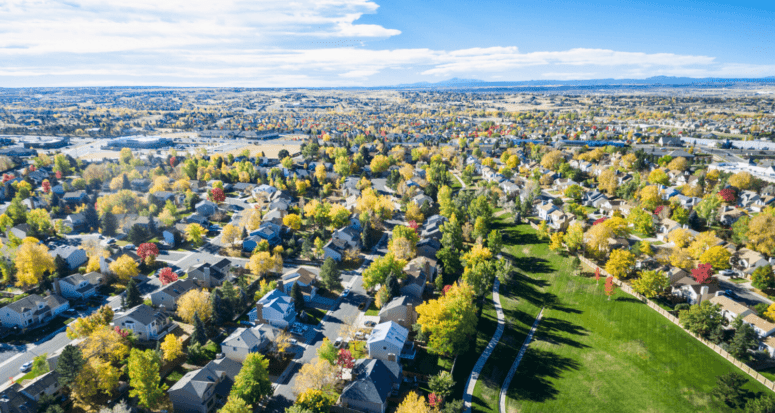How to Buy a House in Aurora, CO — Your Straight Shot to Denver for Cheap
- Published on
- 4-5 min read
-
 Denis Storey Contributing AuthorClose
Denis Storey Contributing AuthorClose Denis Storey Contributing Author
Denis Storey Contributing AuthorBorn in Hawaii and raised in Kansas City, Denis Storey migrated to Denver in 1998 for a job at a daily newspaper and never left. Denis spent more than 15 years spent covering health care and health care reform, insurance, employee benefits, human resources, and retirement planning. More recently, he’s spent time covering topics such as food, food safety, technology, and real estate.
Buying a house in Aurora, Colorado will give you access to coffee shops, parks, and great schools — and you’ll be just a 9.2-mile jaunt from all that Denver has to offer. But Colorado hasn’t been this popular since the gold rush, with the state pulling in new residents at a rapid clip. Since 2017, for example, Census Bureau numbers put Colorado as the seventh-fastest growing state in the nation, with a 1.4% rate of growth.
While Denver draws the bulk of that, it’s certainly not alone. Aurora, already the state’s third-largest city, has witnessed an influx of new residents that outpaces the state overall. At last count, more than 374,000 called Aurora home, a 1.87% jump in growth over the previous year and more than a 15% population increase since the 2010 census. So, you won’t be the only person fighting for a slice of real estate here!
Not to worry. We talked to experts with a combined 30 decades of experience living and selling homes in Aurora to draft this exhaustive guide to the city’s housing stock, how to decide between buying a new or existing home, and where to find the best schools and amenities for your family.

A suburb by any other name
Aurora is Denver’s largest suburb, yet managed to surge past its big brother in land mass since the last census. It’s grown so big, in fact, that it’s spilled over into three counties. As a result, there’s still a lot of room for development.
“The city is broken in Aurora North and Aurora South,” says Realtor Lina Krylov, a broker-associate who’s sold 623 single-family homes in her 15-year career.
So how do buyers know where to shop?
With the initial buyer consultation, Krylov always addresses proximity, such as a potential buyer’s commute, before starting any search.
“For buyers looking for newer construction, we look further south. The most important factor, though, is figuring out what their criteria are, what’s important to them, and we go from there.”
One other thing Krylov tells her clients? Look at where the real estate agents live: “If they live there, that’s where you want to live.”
Aurora North
Northern Aurora benefits from a larger cluster of major employers, proximity to downtown Denver, and better mass transit options. Older homes also make up the bulk of the housing stock in the northern half of the city.
Aurora — particularly Aurora North — has been home to a large, if fluctuating, military presence since the early part of the last century, anchored by Buckley Air Force Base in the north, which is also the city’s largest public employer, according to the Aurora Economic Development Council. As of last count, in 2017, the base employed 12,000 residents. The base hosts both the 460th Space Wing and the 140th Wing Colorado Air National Guard.
Krylov says she works with a lot of VA buyers stationed at Buckley: “We’re going to be looking at the 80017 ZIP code because of its proximity to the base and because it’s a little more affordable there,” she explains. “And the Fitzsimmons area is becoming increasingly popular,” she adds.
In the private sector, health care still drives the economy, with three of the top five employers coming from the healthcare market, according to the Council’s 2018 data. Children’s Hospital Colorado sits atop that group, employing 5,670 people, and sits in Aurora North.
Ambitious development plans for North Aurora include the new Aurora Highlands development, a 12,500-home subdivision featuring 22 miles of trails, a recreation center, a sculpture park, and a zipline. The 3,000-acre project should accommodate about 60,000 new residents into the city and feature “urban-type amenities in a suburban community,” project manager Carlo Ferreira, told the Denver Post earlier this year. It will be accessible through Colorado’s A-line, allowing for easy access to downtown Denver as well as to Denver International Airport (DIA).
Aurora South
Aurora is also home to nearly 100 parks encompassing more than 7,500 acres of open space and natural areas, including a pair of reservoirs and more than 90 miles of trails. The city is also home to half a dozen municipal golf courses and several private courses. Most of these amenities are situated in the southern half of Aurora.
“A lot of people like Aurora South because some of those ZIP codes belong to the Cherry Creek School District. And that’s very important to a lot of buyers,” notes Krylov.
Most of the new housing stock is springing up in Southern Aurora, since that’s where there’s more room for development. It’s a little more spread out, which could make transportation an issue, but sections of it sit in the Cherry Creek School District, one of the best in the state. Homes in the south also tend to be a little more expensive.
Aurora, while more than half an hour from downtown Denver, boasts access to E-470 — a toll road that wraps around three-quarters of Denver — and Interstates 25 and 225, which provide avenues to the Tech Center and DIA.
New construction in Aurora is very popular, Krylov points out, but it still comes down to what a potential buyer can afford. The other thing buyers might not consider going the new-build route is that newer communities tend to come with higher taxes – in some cases, almost twice the rates of existing neighborhoods.
One other thing buyers — and their agents — tend to overlook is what taxes can do to a mortgage payment.
“Some agents just don’t point that out to their buyer,” Krylov said. “For example, I have [a] buyer I’m showing tomorrow and they picked out six houses. Two of them had taxes that were $5,200 a year, so my initial response was, ‘let’s run this by the lender,’ because I know they’re payment-conscious. It’s definitely on the agent to educate the buyer.”
With new construction, Krylov points out that buyers should expect their taxes to be anywhere between 1% and 1.1% of the purchase price, something builders aren’t normally inclined to highlight. That’s also why Krylov thinks it’s important for new-construction buyers to retain representation as early as possible in the buying process.
Finally, Aurora overall remains one of Colorado’s more diverse areas, featuring a minority population of more than 50%, based on numbers from the Denver Regional Council of Governments.
Aurora housing stock: the basics
Based on the latest data from the city of Aurora, the city boasts more than 130,000 housing units — 51% of which are single-family detached homes, higher than state and national averages. On the other hand, Aurora has fewer multifamily buildings — with 50 or more units — than the metro area overall.
That appears to be changing, however. After issuing no new multifamily permits in 2015, the city permitted more than 2,800 new multifamily units between 2016 and 2018, according to the city’s building permit statistics. The city has also permitted more than 1,300 new single-family homes in 2016, 2017, and 2018.
According to Krylov, buyers are still able to “get a lot of bang for your buck in Aurora.” Aurora ranked as the seventh-healthiest housing market in the country, based on a 2018 SmartAsset study, two spots ahead of Denver. The research determined market health based on “stability, affordability, fluidity and risk of loss.” Add that to the views of the Rocky Mountains that are standard in Aurora, the top-notch education, and access to trails and sustainable water resources, and it’s no wonder buyers are interested in Aurora on its own merits.
Aside from all the new construction spreading out from Aurora South, most of the existing homes date back to the 1970s and 1980s. In fact, only 2% of the housing stock was built before 1949.
Krylov explains that because younger buyers prioritize open floor plans, older homes aren’t as attractive: “a lot of them will want an older house that’s been remodeled and the floorplan has been opened,” Krylov says.

Inspector, please!
“Inspections are a lot more involved than they used to be 10 years ago,” Krylov says. “From the general inspection to the sewer scope to the radon test to testing for mold. There’s just so many more inspections being done, and buyers are a lot savvier.”
For houses built from the 1950s to the 1980s, shoppers should look at conducting mold tests and a sewer scope because materials and systems used back then can fail and attract a host of issues.
Radon is the second-leading cause of lung cancer in the United States. Unfortunately, about half of Colorado homes have high radon levels, and buyers should be prepared to request a radon test at the time of inspection. Independent radon gas inspections, which include a test, average between $150 and $300. Fortunately, radon mitigation systems are an easy fix that can be negotiated in your purchase.
Because of Colorado’s sometimes erratic weather, which can include spring and summer hail storms — especially out closer to the plains — roof inspections are particularly important.
“For example, I’m under contract with a buyer right now on a house in Aurora, and we’re getting a new roof because there was hail damage,” Krylov says. “They said the roof was nine years old. And I said, ‘In this area, there have been at least three storms in the last nine years.’ Sure enough, there was hail damage and now the seller’s replacing the roof.”

Pro tips for Aurora homebuyers
For starter homes, buyers can expect to pay $365,000 to $400,000 as of October 2019, according to Krylov. On the higher end of the market, buyers will face prices as high as $900,000 to $1 million.
“I know it’s crazy to say those are now starter homer prices, but they are,” Krylov notes.
HomeLight’s value estimator can help prospective buyers determine if the property they’re looking at is good value:
Krylov also tells would-be buyers to consider when they want to move. She asks all her clients to look at late August to September, because that’s when kids head back to school and the market naturally slows down. Based on HomeLight’s numbers, the best time to purchase a home is in January (with up to 8%-under-average closing prices), followed by February (-6%), October (-2.5%) and September (-2.3%).
“November and December are always good, too, because you’re going into the holiday season,” she added.
This lull benefits buyers, who also might want to avoid the summer rush — from May to July — when most people are relocating.
The worst time to purchase a home in Aurora is in May, with closings going up to 3.56% over asking price. Homes also sit on the market the longest (15 days) in January, and have fewer days on market in July (7 days).
When meeting with buyers about negotiating price, Krylov says it’s still all about education. Questions she wants answered before making any offers include how long the property has been on the market and its condition.
“If the property has been on the market for more than 30 days, then obviously we’re going to have a little more room to negotiate,” Krylov explains. “If the property just got listed yesterday, and it’s priced correctly and is in good condition, then buyers need to be realistic and expect there are going to be multiple offers.”
Working with a top buyer’s agent in Aurora is critical; a top agent in Aurora helps buyers move into about 172 more homes and save them $25,058 on their home purchase. That’s a lot of trips to the mountains for skiing or hot-springs visits!
If moving to Colorado has always been your dream, Aurora might just be the place you’ll find your dream home within reach of everything the state has to offer.
Header Image Source: (Arina P Habich/ Shutterstock)
